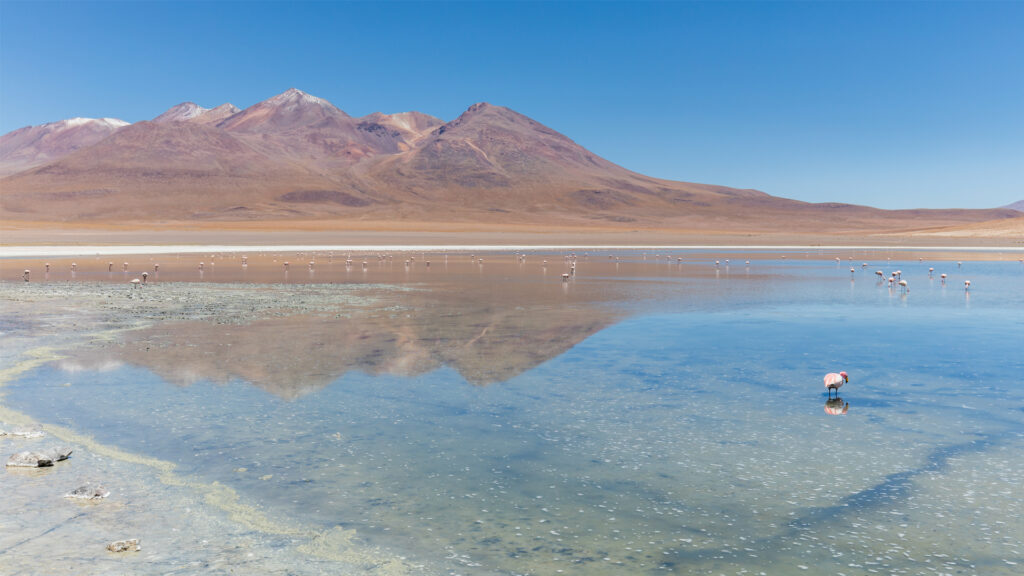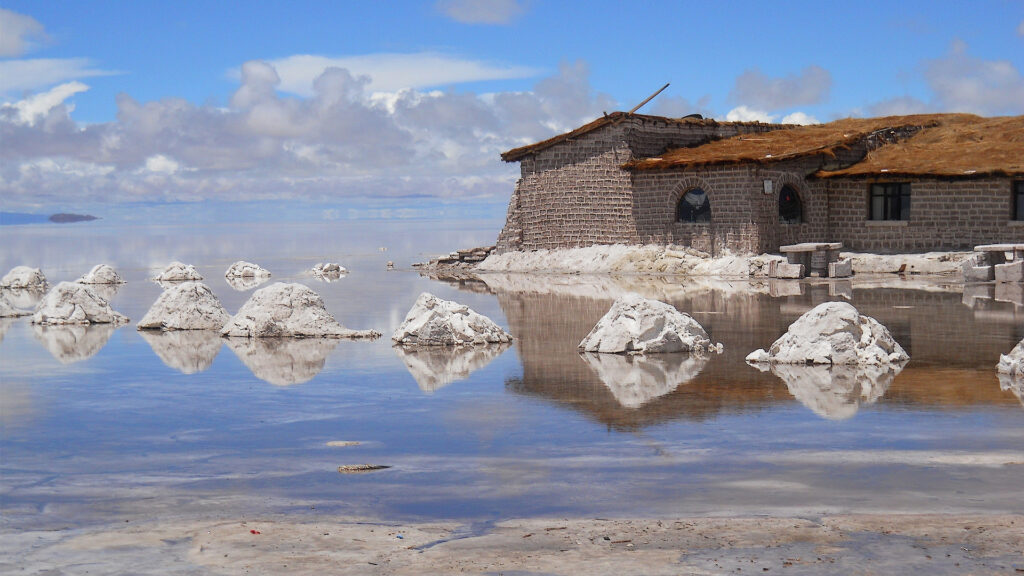Bolivia is racing to attract foreign investment in its massive, untapped lithium reserves, with plans to expand operations and build new processing plants. But residents living near the lithium deposits say there are too many problems with the facilities already in operation.
A lithium plant opened last year has untested equipment and is possibly mismanaging its use of freshwater, raising concerns for residents about whether the Bolivian government can responsibly manage the rapid growth of the industry.
The facilities are located in the Salar de Uyuni, a salt flat with an estimated 21 million tons of lithium. Located in the Department of Potosi, the salt flats are believed to be the largest lithium deposit in the world, and makes up one piece of the “Lithium Triangle” with neighboring Argentina and Chile.
“We want to see the industrialization of lithium,” Potosí senator Elena Aguilar told Mongabay. “But it has to be done responsibly for the sake of our natural resources, like water.”

Last month, several activist groups and senators toured the lithium processing facilities run by the state-owned Yacimientos de Litio Bolivianos (YLB), the China Machinery Engineering Corporation and Beijing Maison Engineering Co. They discovered equipment that still wasn’t operational and found that officials were unsure how much water, electricity and chemicals they were using.
The facilities are designed to produce raw materials for batteries — including lithium carbonate and potassium chloride — while also treating the freshwater needed to carry out those processes. While two of the facilities opened last year, another has been operational since 2018.
Advocacy groups like the Regional Federation of Workers and Peasants of the Southern Altiplano (FRUTCAS) have been trying to get access to the facilities for over a year, claiming they have a right to know how the lithium industry uses their natural resources. After being denied several times, they were finally permitted to carry out an inspection last month.
During the inspection, they found that the potassium chloride plant was operating at less than 30% capacity. It’s supposed to produce 350,000 tons per year but has only managed to produce around 80,000 tons.
Equipment in the lithium carbonate plant isn’t operational, the organizations said in their presentation. Some equipment hasn’t even been unpacked and there isn’t enough electricity to power it. Operators there also didn’t know how much water was needed to meet production goals.
Many residents living around the salt flat have traditionally relied on tourism, the domestic salt market and agriculture, but they welcome the development of the lithium industry as long as they can benefit, too. However, profit-sharing plans only make sense if the plants are actually working. And they want to make sure that lithium production — which involves complex chemical treatment — doesn’t destroy the salt flat or exploit the little water available in the desert environment.
“The lithium carbonate industrial plant represents an enormous failure of management for a project that is vital to the economic development of the country,” organizations who toured the facilities said in a presentation. “That results in a considerable loss and economic impact for the state.”
YLB and Chinese operators couldn’t be reached for comment for this article.
Industry lacks transparency
The sophisticated technology that lithium extraction requires can’t be done by Bolivia alone, but the government also wants to ensure the industry isn’t overwhelmed by foreign entities. It nationalized lithium production in 2008 but suffered years of stalled pilot programs and investment agreements.

Today, foreign companies have to partner with the state-owned YLB to work in the country. In January, YLB launched a new international tender for lithium projects in the Salar de Uyuni and other salt flats in the region — a move critics say is premature.
YLB has favored foreign companies over local communities and kept details of its operations hidden, FRUCTAS claims. Even during the inspection, the government restricted access to information about the facilities. Officials still haven’t shared several hydrological studies that could help mitigate environmental impacts, they said.
“Right now, everything is handled secretly,” said FRUCTAS executive secretary Yamile Cruz. “Nothing is public and that’s what makes us think twice, what makes us have doubts.”
She added, “We have to think about future generations, about the future of our children — because water is life. But as long as there isn’t that information, as long as we don’t have specific studies, everything is uncertain.”
Mongabay is a U.S.-based nonprofit conservation and environmental science news platform. This piece was originally published at https://news.mongabay.com/2024/04/rapid-growth-of-bolivias-lithium-industry-creating-new-problems-for-local-communities/.
Sign up for The Invading Sea newsletter by visiting here. If you are interested in submitting an opinion piece to The Invading Sea, email Editor Nathan Crabbe at ncrabbe@fau.edu.



